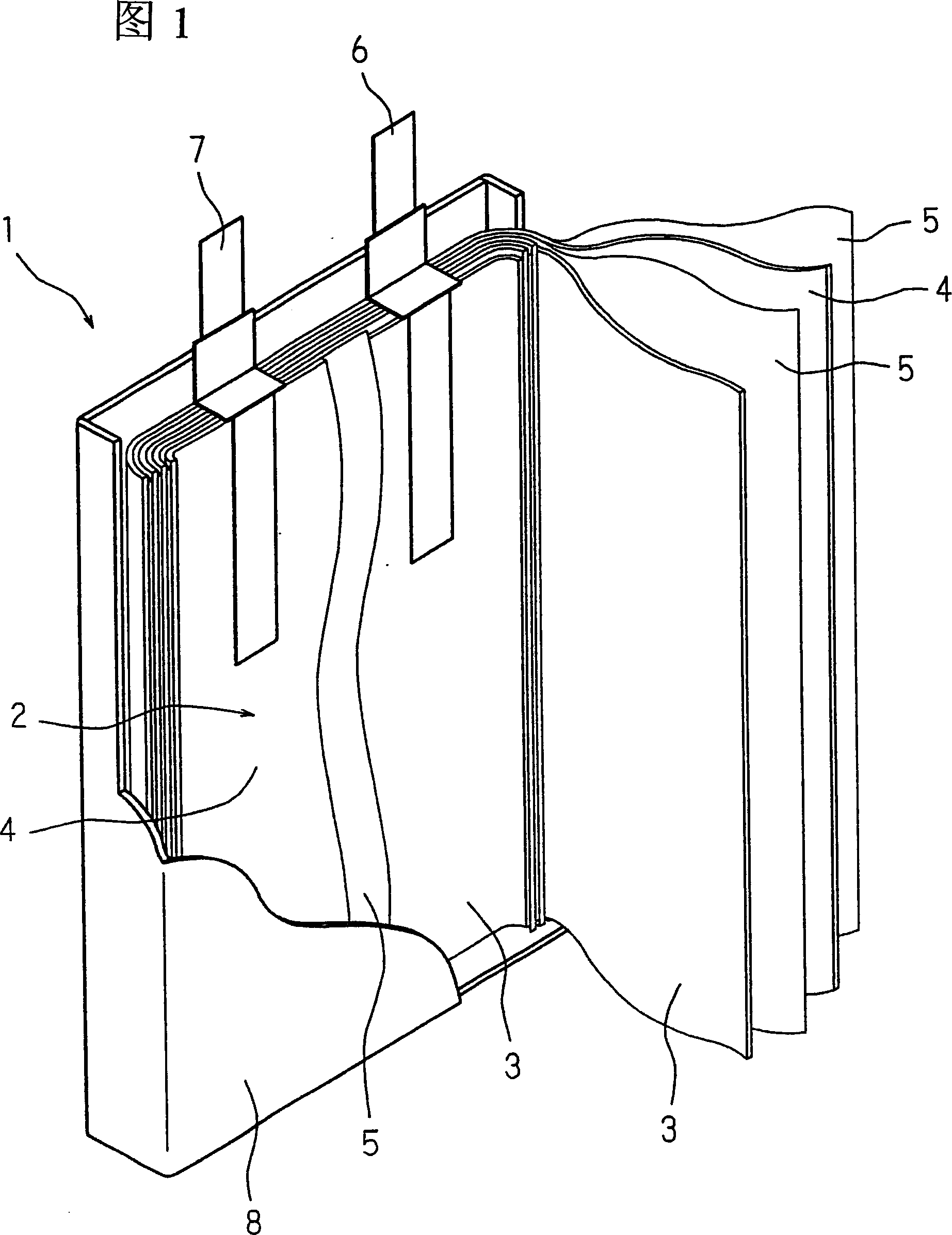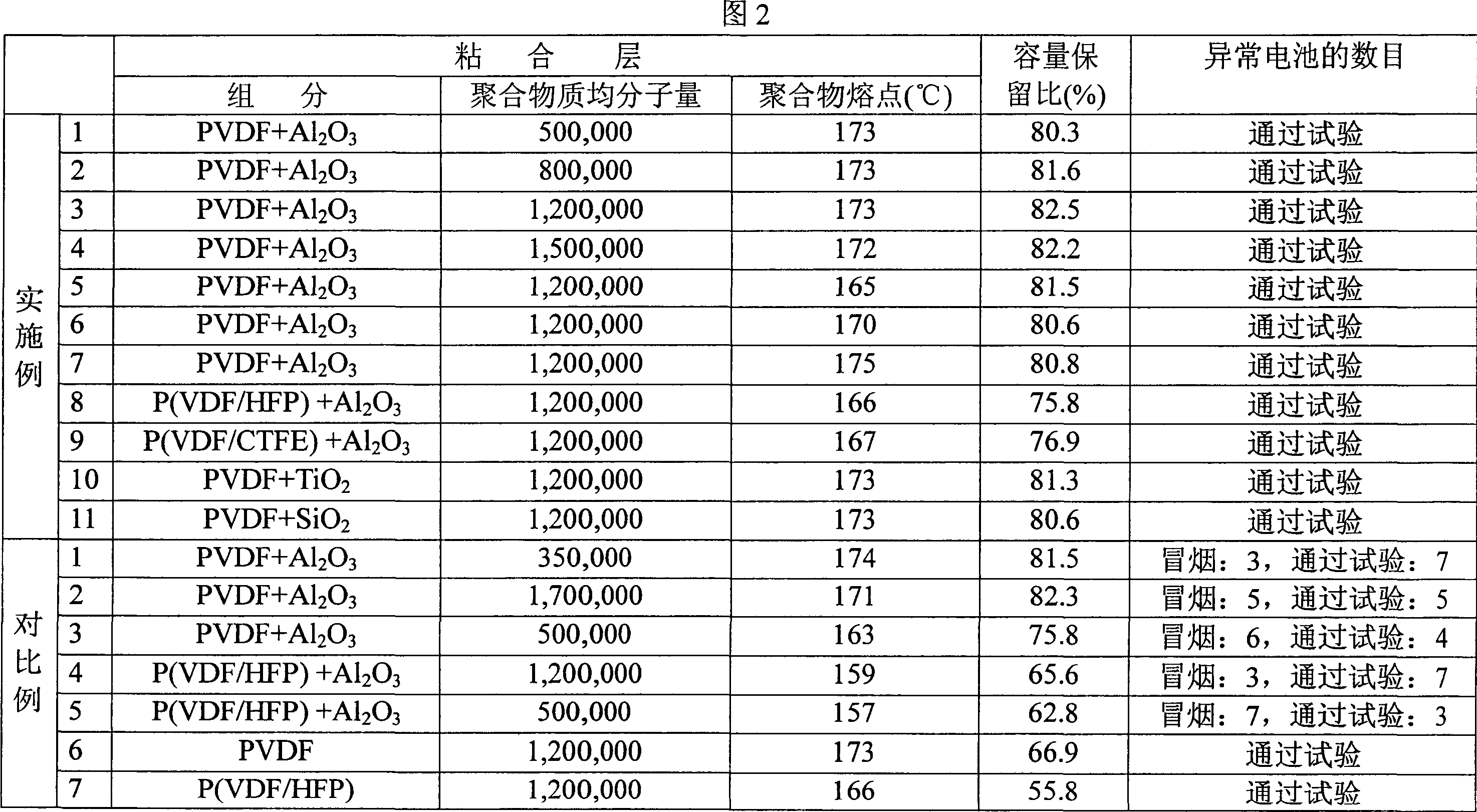Non-aqueous electrolyte battery
A non-aqueous electrolyte and battery technology, applied in the direction of non-aqueous electrolyte batteries, electrolyte battery manufacturing, secondary batteries, etc., can solve the problems of difficult discharge performance and achieve the effect of reducing deterioration
- Summary
- Abstract
- Description
- Claims
- Application Information
AI Technical Summary
Problems solved by technology
Method used
Image
Examples
Embodiment 1
[0021] Fig. 1 shows an exploded perspective view of an example of a nonaqueous electrolyte battery according to the present invention. In Fig. 1, reference numeral 1 is a nonaqueous electrolyte battery (hereinafter referred to as a battery), reference numeral 2 is a generating element (generating element), reference numeral 3 is a positive plate, and reference numeral 4 is a negative plate. Reference numeral 5 is a separator, reference numeral 6 is a positive terminal, reference numeral 7 is a negative terminal, and reference numeral 8 is a battery casing.
[0022] For the positive plate 3, by mixing 94% by mass of lithium cobaltate as an active material, 3% by mass of acetylene black as a conductive agent, and 3% by mass of polyvinylidene fluoride as a binder, and then The mixture was dispersed in N-methyl-2-pyrrolidone (NMP) to prepare a slurry. The slurry was uniformly coated on a 15 μm thick aluminum foil collector and dried, and then film-pressed with a roll press to pre...
Embodiment 2
[0027] A battery similar to that of Example 1 was fabricated except that the adhesive layer polymer had a mass average molecular weight of 800,000.
Embodiment 3
[0029] A battery similar to that of Example 1 was fabricated except that the mass average molecular weight of the adhesive layer polymer was 1,200,000.
PUM
| Property | Measurement | Unit |
|---|---|---|
| melting point | aaaaa | aaaaa |
| melting point | aaaaa | aaaaa |
| melting point | aaaaa | aaaaa |
Abstract
Description
Claims
Application Information
 Login to View More
Login to View More - R&D
- Intellectual Property
- Life Sciences
- Materials
- Tech Scout
- Unparalleled Data Quality
- Higher Quality Content
- 60% Fewer Hallucinations
Browse by: Latest US Patents, China's latest patents, Technical Efficacy Thesaurus, Application Domain, Technology Topic, Popular Technical Reports.
© 2025 PatSnap. All rights reserved.Legal|Privacy policy|Modern Slavery Act Transparency Statement|Sitemap|About US| Contact US: help@patsnap.com


